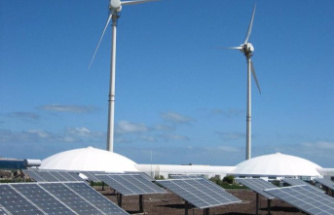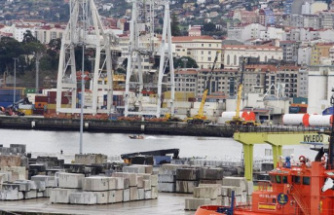More than four years after Hurricane Sandy rocked the coast, residents of the Jersey Shore are still recovering. Using "Jersey Strong" and "Stronger than the Storm" as their mantra, many rebuilt their homes, elevating the structures on stilts to guard against damage from future storms. Other residents, hampered by insurance troubles, have yet to finish construction.
But what happens when the ocean no longer roils into homes and businesses during storms alone? What happens when, according to scientist projections for 50 and 100 years from now, portions of the Jersey Shore are permanently submerged due to rising sea level?
That's the question posed by "Bad Tidings," a documentary screening on Feb. 12 at the New Jersey Film Festival at Rutgers University.
Red Bank's Daniel Natale, 24, the documentary's director, majored in environmental policy at Rutgers, where he also earned a certificate in digital filmmaking. His idea wasn't to document the toll of Hurricane Sandy, as other films had, but instead to use the destruction to talk about the problem of sea level rise.
After writing an article about post-Sandy Sea Bright, Natale, who graduated in 2016, was inspired to revisit the town. He was intrigued to learn about the potential impact of sea level rise on the barrier island community -- namely, that in 100 years, the ocean could rise up to five feet.
"What I really wanted to communicate with this film is that climate change isn't just a big, worldwide issue," Natale says. New Jerseyans may not see it as "their problem," he said. But the dilemma of sea level rise is Sea Bright, is Union Beach, is Atlantic City.
Natale visited locals in Sea Bright and Union Beach who were still rebuilding years after the storm, passionately driven to piece back together the home life they treasured. They acknowledge both the potential for Sandy-like storms and sea level rise. But they also don't dream of moving anywhere else.
"What the people want isn't always right," Natale says.
At the center of the film, which premiered in November at the Blue Ocean Film Festival in St. Petersburg, Fla., is Dina Long, mayor of Sea Bright. At the time of the production, she said 75 families in the borough were still displaced by Sandy.
"Climate change and sea level rise are things that I always knew about, but perhaps I didn't understand the personal impact it would have on me until I went through Hurricane Sandy," she tells Natale.
Sea Bright Mayor Dina Long in the documentary 'Bad Tidings.' (Shaodi Huang)Efforts to stave off damage have included the town's seawall and bulkheading. Dunes have been built outside of the seawall to prevent erosion of sand from the beach. Natale shows the Army Corps of Engineers at work on one such project. But the seawall worked against the community during Sandy, acting as a funnel to direct the storm waters downtown, where storefronts were obliterated. Existing approaches to shield homes and businesses have been criticized by environmentalists in favor of depopulating areas nearest the beach.
Still, Long cautions that it isn't just an emotional attachment or sense of belonging that binds residents to their homes.
"This is a middle class community," she tells Natale. "People don't have money to just pick up and move. No one came here offering to buy us out." But the mayor knows that if the worst projections come true, locals will have no choice but to move.
"If the five-foot sea level rise projection model is correct, we're leaving. We're all leaving. We're all moving inland," she says, smiling. "Get ready, Pennsylvania. Here comes Jersey!"
The alternative, at least for now: stay and adapt.
Directly countering that strategy is Ben Horton, a professor of marine and coastal science at Rutgers.
"Sea level rise, even in the smallest amount, can have devastating effects," he tells Natale, including during Sandy. Any amount of Jersey Strong attitude, if it means staying put instead of moving inland, only helps to deny the reality of the situation, he says.
A scene from the documentary showing a home under construction in Sea Bright. Due to the potential for more storms and projections of sea level rise over the coming decades, environmentalists warn that residents should not rebuild at the oceanfront, and instead move inland. (Louis Cabrera)Scott Glenn, a Rutgers professor of marine science and co-director of the Center for Ocean-Observing Leadership, sounds the warning for more storms, envisioning dire circumstances for younger generations affected by the encroaching water.
"It is going to impact the lives of our children that are alive right now, that are in school," he tells Natale. "... They're the ones that are going to have to make these decisions."
Then there are Sea Bright residents like Dave Muratore, who calls living "by the water" the ultimate dream. He doesn't regret staying in his coastal home during Sandy, when 2 1/2 feet of water poured into his house. He tells Natale he's more concerned about the Islamic State group than rising sea level.
"The great thing is, on Sunday nights, when everybody goes home in the summer, we don't have to get in the car and fight the traffic because we're already at a destination resort," he says.
Another resident, Shelley Treacy, rejects the notion that she should move several blocks inland.
"No, this is my home," she tells Natale, saying she doesn't belong anywhere else.
A flooded street in Sea Bright. After Hurricane Sandy, storefronts in the downtown section of the barrier island were completely wiped out. (Dan Natale)"It's just a little sensationalistic," she says, when asked about the possibility of her newly restored home being inundated by rising sea. "I mean, we don't know what's going to happen. We don't know what's going to happen tomorrow. I'm not going to buy into the worry. This is my home." Environmental issues, she says, will and happen whether she's there or not.
In the film, Jeff Tittel, director of the New Jersey Sierra Club, criticizes Gov. Chris Christie, who gained national fame for his handling of Sandy's impact.
"What he's done since being on camera, walking up and down the beach in the fleece, he's fleeced the public," he tells Natale. "He's turned the New Jersey coast into a game of Russian roulette."
Tittel tells NJ Advance Media that for the most part, he thinks people are concerned about sea level rise at the shore.
"You've got other people who want to bury their heads in the sand like an ostrich, except they're going to get hit by a wave," he says. "I think they're trying to pretend that things are normal because they don't want to make the hard choices. In a way it's very selfish."
Tittel pans the money being spent on building up the coastline by digging up sand and piling it onto the shore, a process he says is also damaging to marine life. Natale's film notes that since 1980, the state has spent more than $1 billion on beach replenishment.
"There's a kind of hubris that you think that you're stronger than nature and you're stronger than the tides," Tittel says. "And that's false."
"Bad Tidings" screens at the New Jersey Film Festival at Rutgers University's College Avenue Campus on Feb. 12. The screening starts 7 p.m. at Voorhees Hall No. 105 at 71 Hamilton St. in New Brunswick; admission $12. The festival runs through March 31; visit njfilmfest.com or badtidingsfilm.com
Amy Kuperinsky may be reached at akuperinsky@njadvancemedia.com. Follow her on Twitter @AmyKup or on Facebook.Our editors found this article on this site using Google and regenerated it for our readers.













